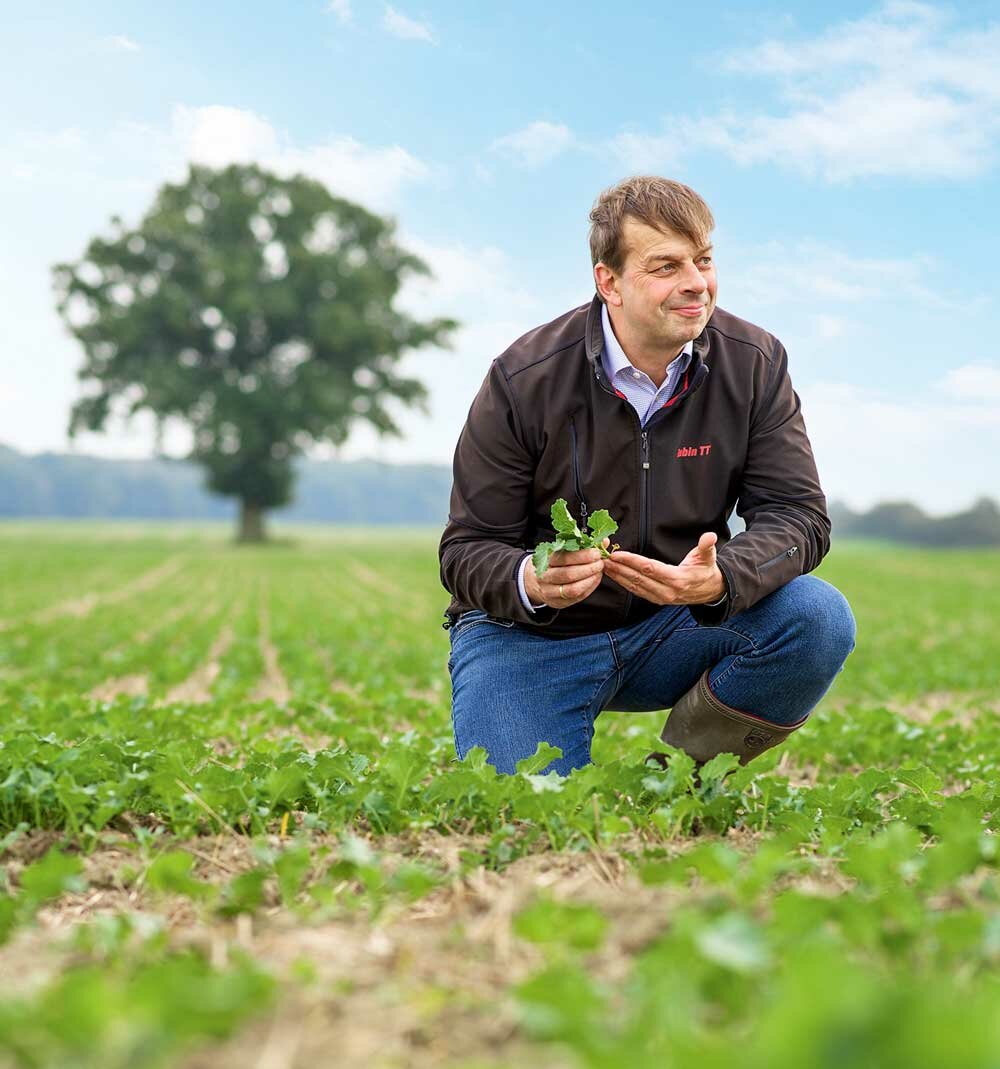Hubertus Paetow: “We can benefit from innovation”
Interview by Thomas Künzel, DLG Mitteilungen
Our production systems must become more resilient in order to combine productivity, climate protection and biodiversity. How can this be achieved? What role does digitalization play? And where are the new opportunities? DLG President Hubertus Paetow provides answers.
Mr. Paetow, the advancing climate change and increasing loss of biodiversity, the growing population and the associated global demand for resources will shape future arable farming. How can these challenges be met?
I believe we need to become much more open to everything that can be roughly categorized as innovation in the direction of greater sustainability. The theme of the field days “Out of the box” shows this. We naturally find it difficult to understand progress in terms of questioning the familiar and looking for something new. Especially when the familiar works quite well in the short term.
In the entire toolbox of innovations, we must never exclude anything from the start. Because the problem determines the solution, and not the other way around. Neither 100% organic farming, 100% smart farming nor 100% genetic engineering will help us, but it will probably be a mixture of everything.
Are there only conflicting interests between production and ecology. Which innovations benefit both goals equally?
Admittedly, some conflicts of interest cannot be resolved even with the best formulations, nor can they be resolved with technical progress. The trivial wisdom that where there is a dense crop of wheat, there will not be enough flowers for pollinating insects is a fact. And the fact that we need this wheat population for land productivity is not something we can change much with innovations.
It is much more a question of achieving a better balance. The concept of productivity plays a role here. We are used to measuring productivity in dt/ha, but that is only half the truth. Of course, the breeding pairs of skylarks per hectare are just as much a part of ecological productivity. Or the avoidance of nitrate input into the groundwater, etc. And as always, when we have such conflicts, it's best if we measure and balance them somehow.
Are innovations a Unique Selling Point (UPS)?
Absolutely. And in Germany, we have to make sure that it stays that way. After all, we don't have the lowest land costs or the lowest labor costs - we can only be competitive through efficiency. And that depends on innovation. Any political measure that limits the scope for innovation really needs to be very well justified. We can still score points through innovation, we just have to make sure that we handle the delicate plant carefully.
Whether organic, conventional or regenerative - if we can evaluate sustainability objectively, then the form of cultivation doesn't matter?
That's how I see it. It is not a given that an organic farm will perform better in the overall sustainability assessment than a well-managed conventional farm. In this respect, this system of indicators is dependent on agreement being reached at some point. That is the biggest problem, because the indicators are described, as is the methodology for recording and evaluating them.
Let's take farm-to-fork as an example: indicators were wildly plucked out of the air for this. Is a 50% reduction in pesticides really a useful indicator for biodiversity conservation? I say no. Because it can develop just as well if I don't reduce crop protection so much, but instead establish a wider crop rotation, for example.
The use of chemical crop protection will become more challenging in the future. How can production and environmental interests be balanced here?
It is always extremely damaging to think in rigid categories about improving sustainability. If you publicly announce that you want to reduce the use of pesticides and see this as an end in itself, then no company will develop new active ingredients because they know they can't sell them. Even if this active ingredient is biodiversity-friendly. And that is the great disadvantage of losing sight of the actual goal - namely biodiversity conservation - when creating political instruments.
The world won't get any better just because we only spray half as much. It may well be that we can achieve this target in a different way, perhaps even much better than with a rigid reduction or territorial framework.
Many see “digitalization” as the key to the future. Where is the problem and what promises success?
Well, it always becomes difficult when several components have to work together and data cannot overcome certain restrictions between different systems. There is still a lot of catching up to do. Let's take the example of combined chemical-mechanical weed control in sugar beet, i.e. band spraying and hoeing: Here you always have different machine and equipment manufacturers involved and no one can offer you a system “out of the box”. As the DLG, we are trying to make progress in this area with a platform like FarmRobotix.
I see the greatest potential in AI-supported decision-making systems. Is the pest below the damage threshold? Can I do without treatment? Many farm managers still find it difficult to make this decision and take the risk. If they had greater certainty through the use of AI, it would be easier. And, of course, the most biodiversity-friendly measure is the one I don't take at all.



